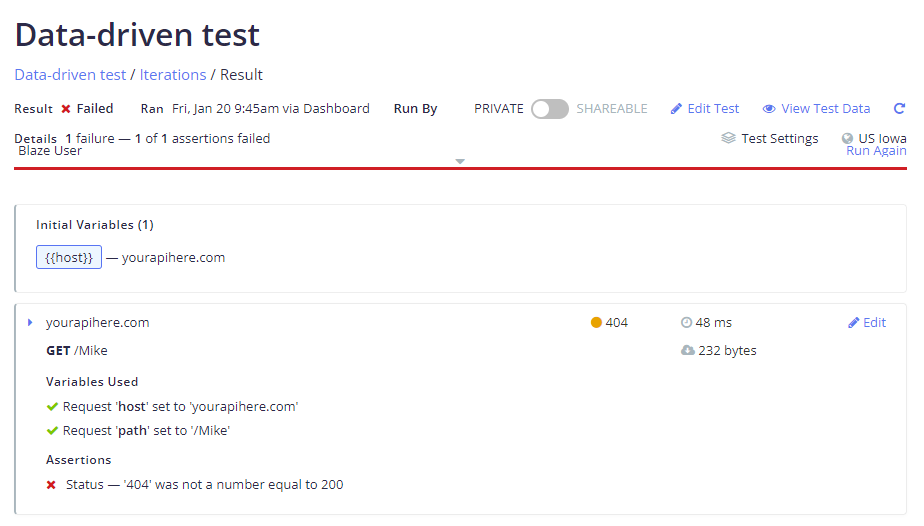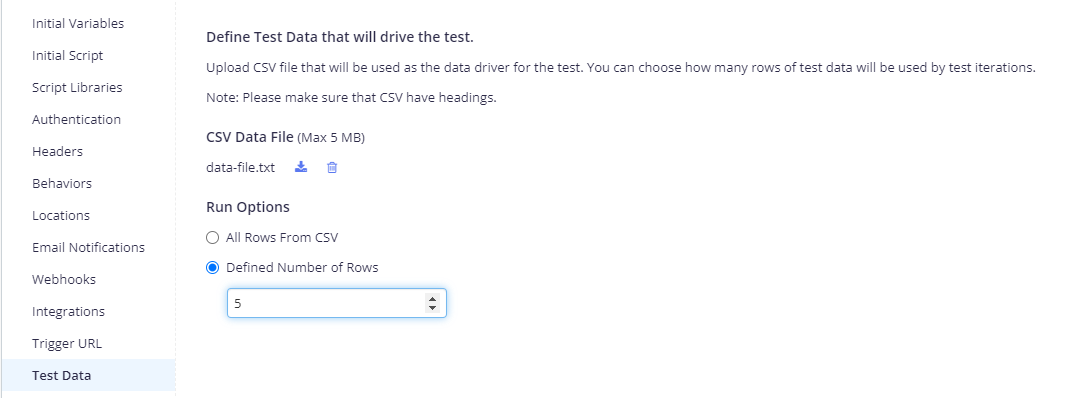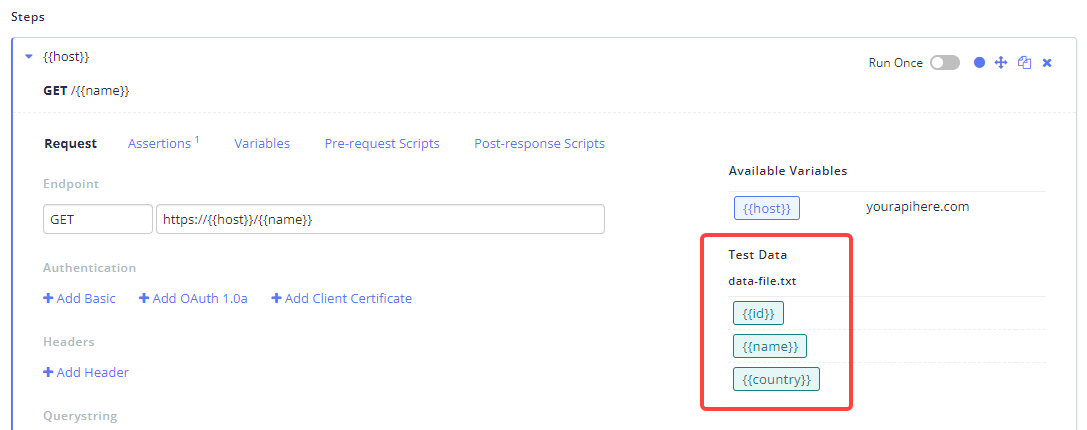Using Test Data from CSV Files
You can use CSV files to drive API Monitoring tests by data stored in the CSV file.
This article covers the following tasks:
Prepare Your CSV Data File
BlazeMeter supports data files with the extensions .csv, .txt, or .dat, with a file size of no more than 5 MB.
Set your variables
Use the header row to define your variable names in a list of comma-separated strings. No other separator is supported.
id,name,countryThis example has 3 data columns.
Data file example
The following is an example of a header row containing variable names and corresponding data values in the rows below. Each column corresponds to one variable and its values.
id,name,country
1,John,US
2,Jack,GB
3,Mike,IN
Use CSV Data Files in API Monitoring Tests
To upload and use your CSV data file:
-
Go to the BlazeMeter API Monitoring tab.
-
Open or create an API Monitoring Test.
-
Go to Editor > Environment > Test Settings and select Test Data.
-
Under Test Data Source, select Add CSV File.
-
Select Choose File, add your data file, then click Upload CSV File.
-
Define your Run Options. You can choose to use all the data rows in the file, or set a defined number of data rows from your file.
Depending on your subscription plan, you may be subject to a limited number of data rows. If your specified Number of Rows exceeds the data row limit, the Test Data size will be automatically reduced to match your subscription. -
(Optional) Choose whether to Run Data Iterations Sequentially. By default, data-driven API tests are running data iterations in parallel, which is faster.
-
Verify that the expected Test Data variables are now visible in the Editor under Steps.
-
You can now add data parameters using the test data variables in your Request and Assertions sections, much like regular variables. For more information, see Dynamic Data and Request Chaining.
Run Your Data-driven Test
After uploading and configuring your CSV data file or Data Entities, and adding parameters to your step Request or Assertions, click Run Now.
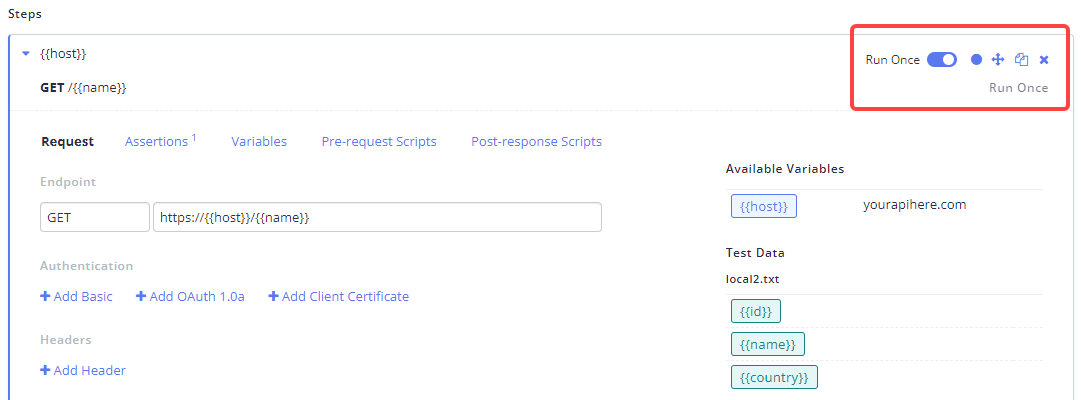
After enabling, click Save and Run.
View Test Iterations and Individual Data Line Results
For data-driven tests, test results will be grouped in Iterations. Each iteration represents a test execution using a single data line entry from the CSV file or Data Entity.
Each set of Iterations will show a failed count (if any). This represents the number of individual iterations that failed within that group.
Access individual data line result
To view an individual iteration/data line result:
-
Go into a test and select Results.
-
Click on View Iterations to show the individual iterations.
-
Identify the specific iteration by clicking View Test Data.
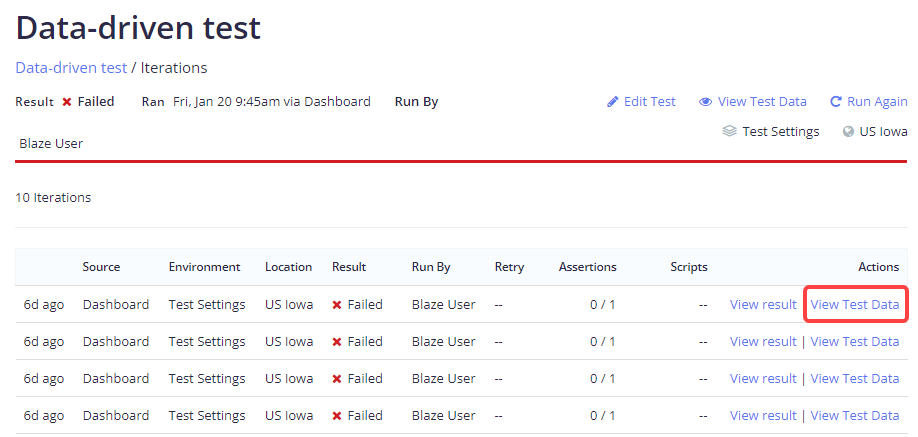
This will bring up the data line from that particular iteration, as follows:
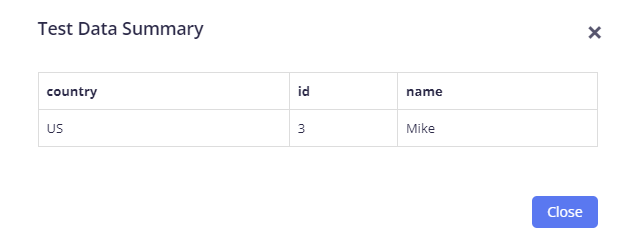 Clicking View Test Data next to the test name in the Iterations view will show all the data lines used in all the iterations.
Clicking View Test Data next to the test name in the Iterations view will show all the data lines used in all the iterations.
-
Once you've identified the iteration, click View result.
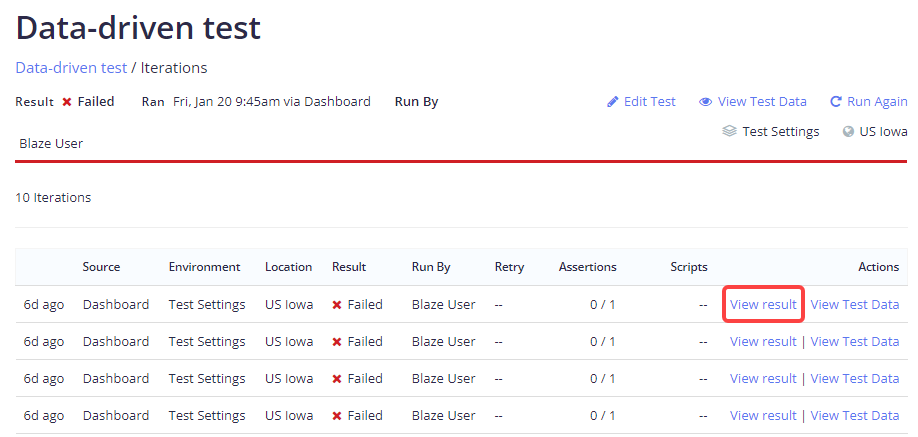
The individual data line result is shown:
